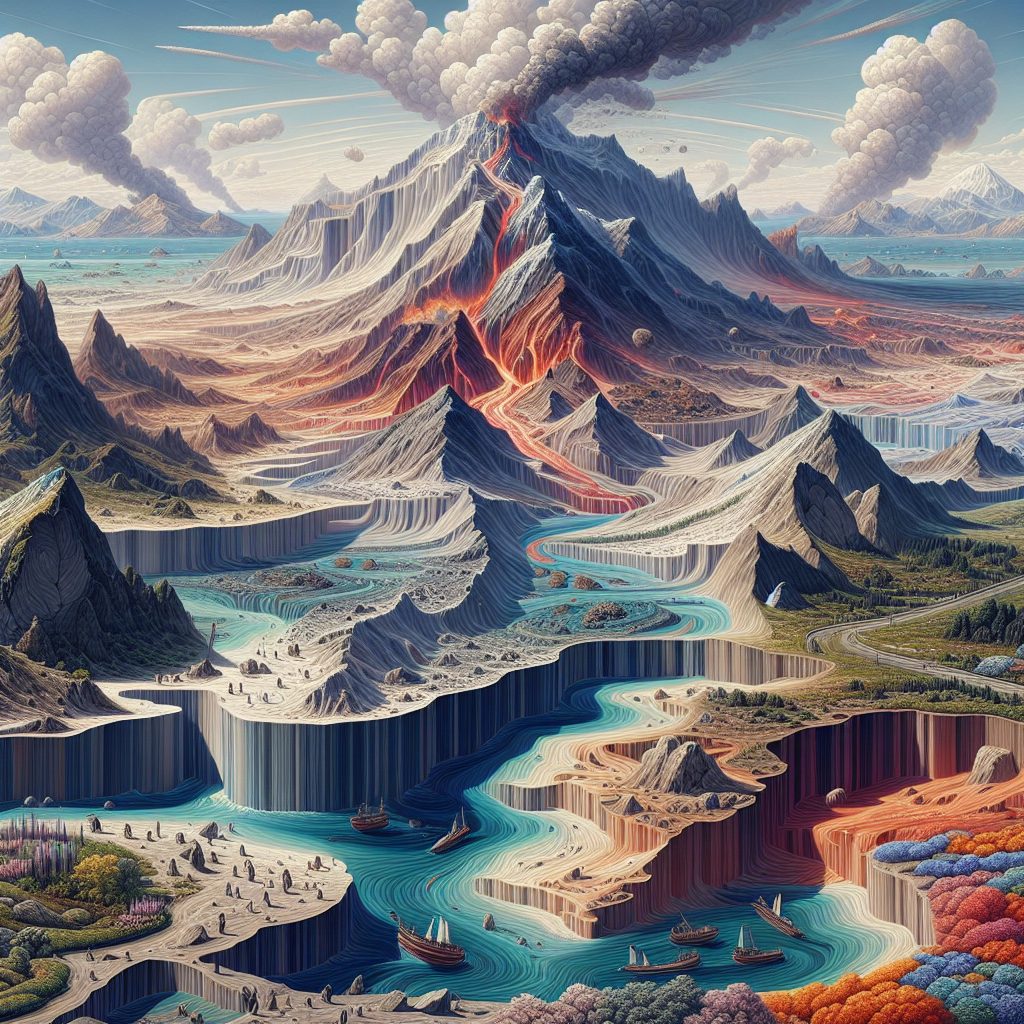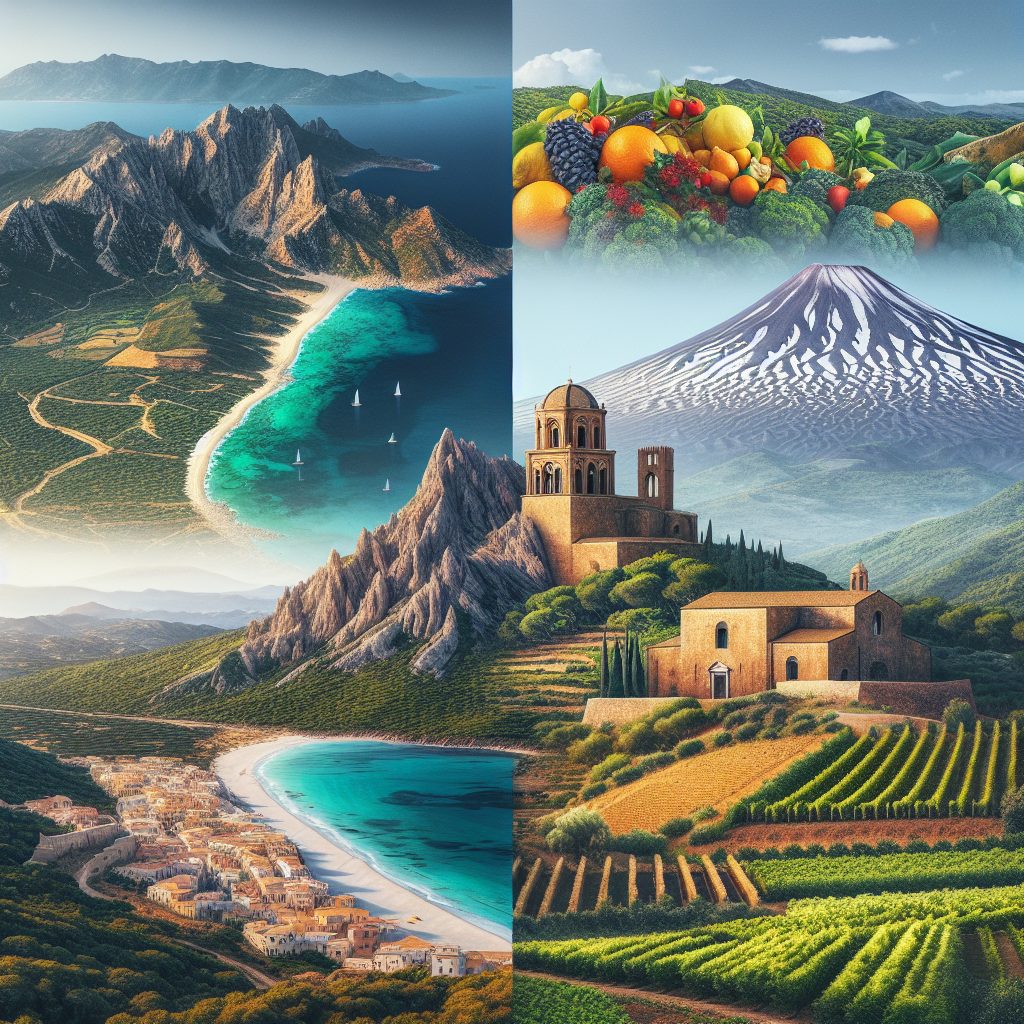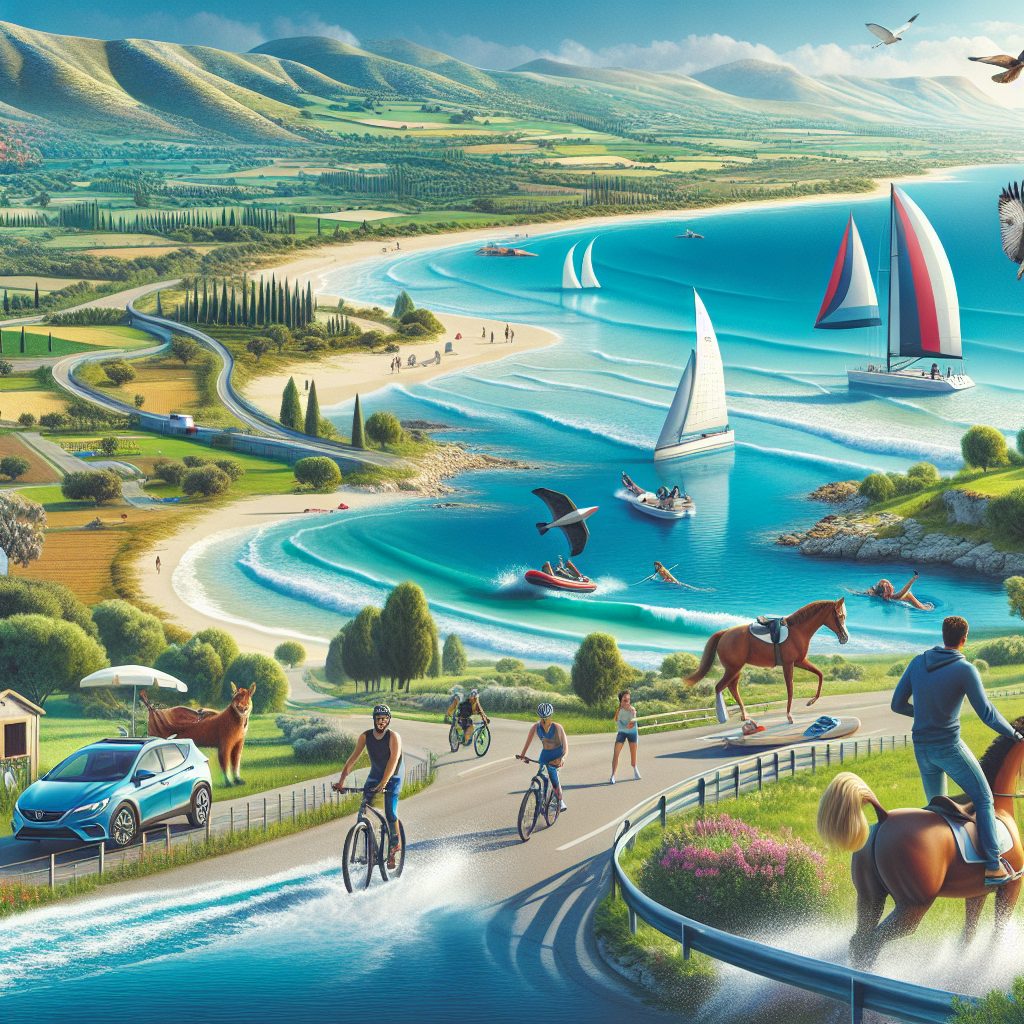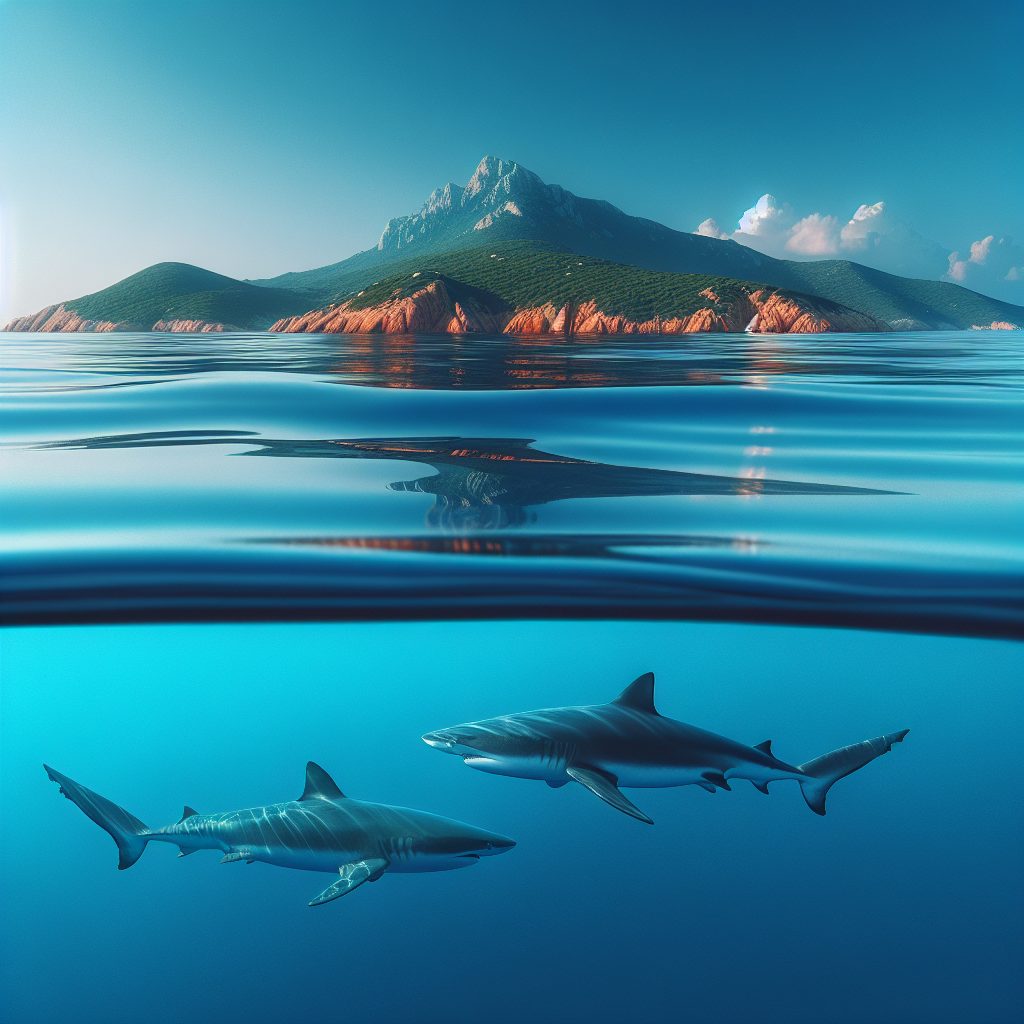Nestled in the heart of the Mediterranean Sea lies the enigmatic island of Sardinia, a place where the tapestry of history is as deep as the waters that surround it. Sardinia’s origin story is a geological marvel, one that unfolds over hundreds of millions of years, a tale of tectonic shifts, volcanic activity, and the relentless forces of wind and water. The island’s rugged landscape, with its towering cliffs and rolling hills, is a testament to the ancient collisions between the Eurasian and African tectonic plates, a monumental event that not only gave rise to the island itself but also created a unique ecosystem that is home to both endemic species and remarkable geological formations.
As we delve deeper into the narrative of how Sardinia was formed, we will uncover the critical role of the island’s complex geology in shaping its current ecosystem. From the rich ore deposits that have fueled economies past and present to the peculiar natural habitats that have emerged, Sardinia’s formation has left a significant mark on its environment, culture, and even the identity of its people. In the sections to come, we’re set to explore the key takeaways from this intricate history, each one a piece of the puzzle that makes up this Mediterranean jewel. Stay with us as we unearth the intricate processes and profound impacts that have turned a fragment of the Earth’s crust into the dazzling island of Sardinia we know today.
Key Takeaways
1. Sardinia’s geological history dates back over 500 million years and has been influenced by various geological processes. The island was formed through a combination of plate tectonics, sediment accumulation, and volcanic activity. Its origins trace back to the ancient Paleozoic era when it was part of a supercontinent.
2. During the Mesozoic era, particularly in the Triassic period, the supercontinent broke apart, causing the fragments that would become Sardinia to drift and eventually collide with the European plate. This collision led to the folding and uplifting of land that contributed to the formation of the island’s mountain ranges.
3. The island has experienced significant volcanic activity; the Sardinian volcanic sequence is particularly noteworthy and has played a crucial role in shaping the island’s topography. The presence of extinct volcanoes and basalt plateaus gives evidence of this fiery past.
4. Throughout the Cenozoic era, especially in the Miocene and Pliocene epochs, Sardinia underwent further transformation due to erosion, sedimentation, and changes in sea level. These processes led to the creation of the island’s current topography, with its characteristic rugged coastline and mountainous interior.
5. The most recent geological activity on Sardinia includes the Tyrrhenian Sea’s expansion and the formation of the Strait of Bonifacio between Sardinia and Corsica. These events are part of the ongoing dynamic evolution of the Mediterranean basin, affecting Sardinia’s geographical and ecological landscape.
Unveiling the Geological Creation of Sardinia: A Comprehensive Analysis
The Tectonic Origins of Sardinia
In the grand geological timeline, Sardinia’s roots can be traced back to when it broke away from the supercontinent Gondwana over 500 million years ago. Consequent diverging tectonic plates created the Proto-Mediterranean Sea before further separation occurred in the late Paleozoic era. The Hercynian orogeny, a mountain-forming event that affected much of Europe, then folded and uplifted the earth’s crust, ultimately giving rise to the island’s rugged highlands.
Volcanic Activity and Formation
Volcanic activity played a pivotal role in shaping Sardinia. During the Mesozoic era, numerous volcanic explosions contributed significantly to the island’s structure, with traces still evident in the Logudoro and Goceano areas. These volcanic eruptions spewed copious amounts of basaltic lava, which cooled and solidified, adding more layers to Sardinia’s complex geological puzzle.
The Role of Sedimentation
Sedimentation processes have also influenced Sardinia’s topography. Throughout the island’s history, basins filled with sediments eroded from the ancient mountains. These sediments compacted and lithified over time, creating the sedimentary rocks that now form much of Sardinia’s coastal lowlands.
Impact of Sea Level Changes
Ongoing shifts in sea level throughout the Quaternary Period, driven by glacial cycles, carved Sardinia’s current coastline. These fluctuations in sea level have repeatedly exposed and submerged the land, leading to the development of beaches, cliffs, and coastal plains that are today synonymous with Sardinia’s scenic beauty.
Sardinia’s Mountain Ranges and Plateau
Central Sardinia is characterized by its mountain ranges and the Gennargentu plateau. These mountains are the remnants of ancient geological forces, having been sculpted through a series of uplift and erosion phases. The processes brought to the surface metamorphic rocks such as schist and granite, which dominate the island’s mountainous core.
Caves and Karst Landscapes
The dissolution of limestone has resulted in the formation of Sardinia’s enchanting caves and karst landscapes. Over centuries, slightly acidic water percolated through limestone cracks, dissolving the rocks and sculpting intricate caves, grottoes, and sinkholes. Among the most renowned are the Grotta di Nettuno and the Grotte di Su Mannau, which draw visitors eager to witness this unique geological artistry.
What are the Guiding Geological Insights to Understand Sardinia’s Formation?
- Examine the geological map of Sardinia to identify ancient tectonic boundaries and sedimentary basins.
- Study the distribution of volcanic rocks to understand the spatial extent of Mesozoic volcanic activity.
- Explore the island’s caves and karst formations as they reveal the limestone dissolution processes.
- Investigate the coastal geomorphology to trace the Quaternary sea-level changes and their impact on the coastline.
- Consider the petrology of mountain rocks to understand the metamorphic history of Sardinia’s highlands.
- Observe mountain structure and topography to gain insights into the uplift and erosion dynamics that have shaped the island.
What Geologic Processes Contributed to the Formation of Sardinia?
The formation of Sardinia is a result of complex geologic processes, including volcanic activity, plate tectonics, and sedimentation. Volcanic eruptions in the region laid the foundation for the island, while movements of the Earth’s crust over millions of years shaped its current form.
Is Sardinia a Volcanic Island?
Yes, Sardinia has a volcanic origin. There are several extinct volcanoes on the island, indicating that volcanic activity played a significant role in its geologic past. However, the current topography is also influenced by other geological processes.
How Old is the Island of Sardinia?
Sardinia’s rocks date back hundreds of millions of years. The oldest formations can be traced back to the Paleozoic era, suggesting that the island’s formation began around 500 million years ago.
Was Sardinia Once Connected to the Mainland?
It is believed that Sardinia, alongside Corsica, was once part of a larger landmass that included present-day Europe. The separation occurred due to the movement of the tectonic plates, which led to the opening of the Tyrrhenian Sea.
Can You Find Fossils in Sardinia?
Fossils are indeed found on Sardinia, offering evidence of the island’s ancient past. Many of these fossils date from the Paleozoic and Mesozoic eras, providing insights into the life forms that existed before the island separated from the mainland.
How Have Erosion and Weathering Shaped Sardinia?
Erosion and weathering have played significant roles in sculpting Sardinia’s landscape. Over time, wind, water, and climatic factors have transformed the rough volcanic terrain into the smoother, more varied topography that is seen today.
Does Sardinia Have Earthquake Activity?
While Sardinia is not as prone to earthquakes as some other regions in Italy, it has experienced seismic activity in the past due to its location at the complex boundary of the African and Eurasian tectonic plates.
What Role Did Glacial Periods Have on Sardinia’s Formation?
The glacial periods affected sea levels, which in turn influenced the formation and shape of Sardinia. When sea levels were lower, parts of what is now submerged were land, and the island would have been larger and shaped differently.
Are There Active Volcanoes in Sardinia?
There are no active volcanoes on Sardinia today. The volcanic activity that contributed to the island’s formation ceased long ago, leaving behind only the inactive remnants of this fiery past.
How Is the Geology of Sardinia Important for Its Biodiversity?
The varied geology of Sardinia, including its mountainous areas, plains, and coastal zones, creates a diverse range of habitats that support a wide array of plant and animal life, contributing to the island’s rich biodiversity.
Final Thoughts
The formation of Sardinia is a remarkable testament to the Earth’s dynamic geologic history. From its volcanic origins to its transformation through tectonic activity and natural erosion, Sardinia offers a unique opportunity to study the forces that continue to shape our world. Geologists and nature enthusiasts alike are drawn to the island’s complex structure, ancient rocks, and the story they tell of a past long gone.
As we explore the intricate details of this Mediterranean gem, we are reminded of the ever-changing nature of our planet. Understanding how Sardinia was formed not only satisfies our curiosity about the past but also helps us appreciate the delicate balance of ecosystems and the importance of preserving natural history for future generations to witness and learn from.






